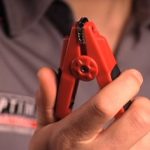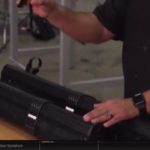Tech Tuesday | Recover a Discharged Battery
Resuscitate a Dead Battery
Here are a few options to recover a deeply-discharged Optima battery, or any AGM battery.

In this next video, Jim McIlvaine from Optima Batteries explains a few options that will recover deeply-discharged batteries, including Optima or any other or any AGM battery.
CLICK HERE TO SEE THE VIDEO | How to recover a deeply-discharged battery
Here are three options for bringing that deeply discharged AGM battery back to peak operational performance.
Recovery Option #1: AGM-Specific Chargers
Many battery chargers will not recognize or charge any battery that has been discharged below 10.5 volts. One reason is many battery chargers read the battery as defective, having either a short, a bad cell or some other defect. But the AGM battery may be just fine; it may have simply slipped below the minimum voltage threshold of the charger to turn on, and the charger doesn’t know what to do with the battery, so it does nothing.

A modern AGM battery charger has the technology, AGM-specific settings and desulfation steps to recondition and recover deeply discharged AGM batteries. And they work well for all lead-acid batteries. They have the additional capability of doubling as a battery “maintainer” for batteries in storage.

Recovery Option #2: DIY
This is a recovery method for the do-it-yourselfer using the equipment you’ve got in the garage. With this option, you’re going to trick your traditional charger into charging the deeply discharged AGM battery.
Here’s what you need:
• Battery charger (under 15 amps)
• Jumper cables
• A good battery, preferably above 12.2 volts. (It can be an AGM or flooded battery- it doesn’t matter.)
• The seemingly dead, deeply discharged AGM battery
• A voltage meter
• A watch or timer
Now, here’s what you do:
Hook up the good battery and deeply discharged AGM battery in parallel – positive to positive and negative to negative. Do not have the charger connected to the battery or turned on at this stage.
Now, hook up the good battery to the charger. Turn on the charger. The charger will “see” the voltage of the good battery (hooked up in parallel), and start providing a charge.
After the batteries have been hooked up for about an hour, check to see if the AGM battery is slightly warm or hot to the touch. Batteries naturally become warm during charging, but excessive heat may be an indication that there really is something wrong with the battery. Discontinue charging immediately if the battery is hot to the touch. Also discontinue the process if you hear the battery “gassing” — a hissing sound coming from the safety valves. If it’s hot or gassing, STOP CHARGING IMMEDIATELY!
With your voltage meter, check back often to see if the AGM battery has charged to 10.5 volts or above. This generally takes less than two hours with a 10-amp charger. If it has, disconnect the charger from the wall outlet and remove the good battery from the charger. Now, connect only the deeply discharged AGM battery to the charger. Turn on the charger and continue until the AGM battery reaches a full charge, or until the automatic charger completes the charge process. In most cases, the AGM battery will be recovered.

Recovery Option #3: Enlist the Professionals
If you don’t own a battery charger, you don’t want to make the investment, or you’re not the do-it-yourself kind of person, this is the option for you. Take the battery to a professional battery specialist who knows AGM technology, and enjoy your day while someone does the work for you.
COMPANY DETAILS |

|
|
Company |
OPTIMA Batteries |
|
Website |
|
|
Connect |




|


|
|
|
|
|
|
Phone |
(888) 867-8462 |
|
Address |
5757 N. Green Bay Ave. |
Milwaukee, WI 53209 |
ABOUT OPTIMA Batteries®
With a 40-year history of technological innovation and engineering, OPTIMA® products offer unstoppable power for extreme enthusiasts and others who require the ultimate power source. In the 1970s, OPTIMA Batteries introduced the first maintenance-free lead acid batteries for commercial and military use and the first high‐performance AGM automotive batteries. OPTIMA innovation didn’t stop there.





